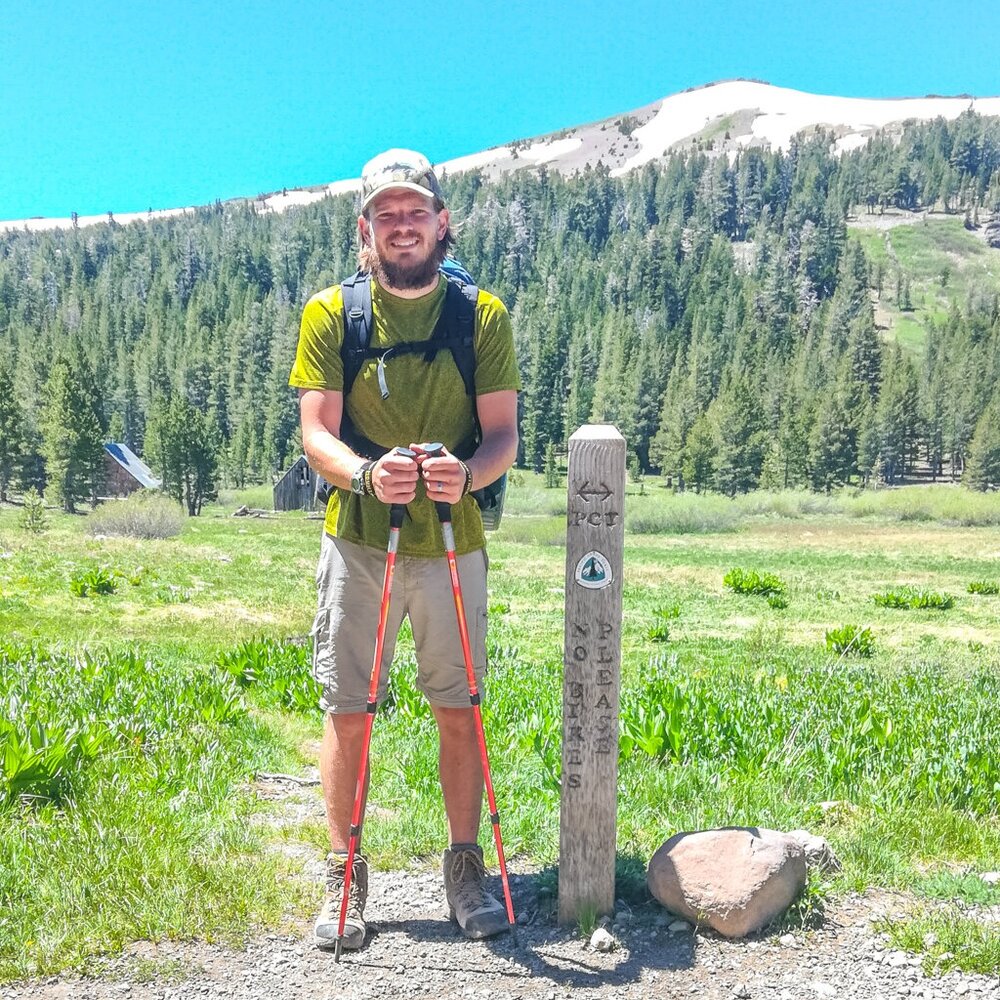
OUTLANDISH OVERLANDER
OUTLANDISH OVERLANDER IS A BLOG HOSTED BY OVERLAND EXPO VOLUNTEER COORDINATOR, ZACH ELSEMAN.
FOLLOW ZACH @OKIENOMADS.
I hope you have had a chance to read the companion to this article: Why Outlandish Vehicles Make Bad Overlanding Rigs. In that article, I cover some of the negative aspects of traveling in an obscure and outlandish vehicle-mostly retired service vehicles, a lot of which we did not expect before leaving for two years of extended travel across North America.
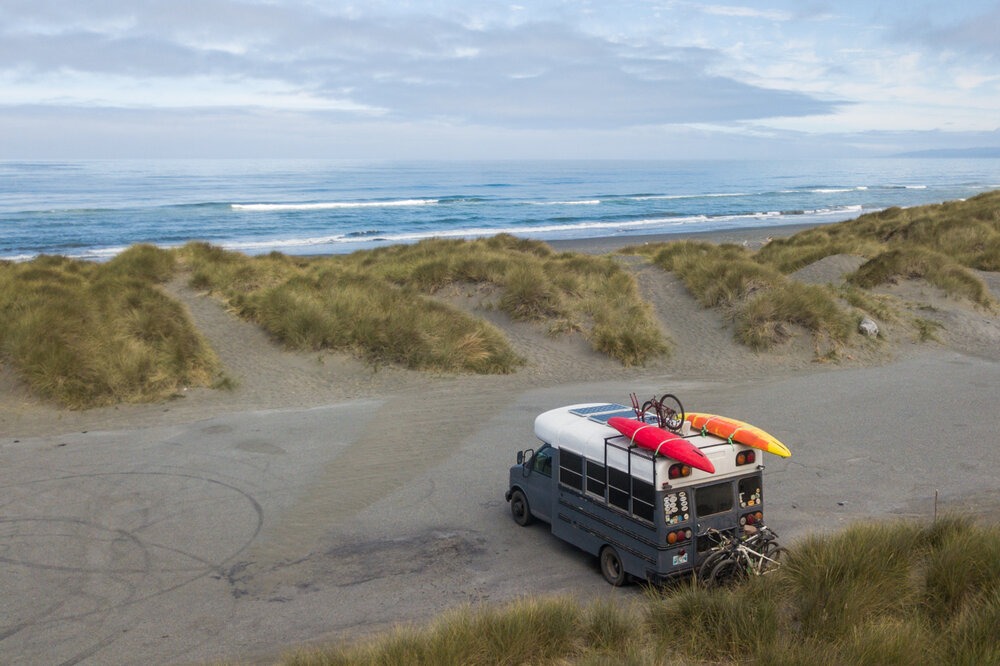
Early on in our travels with way too much stuff!
Everything AND the Kitchen Sink
When living in a school bus, ambulance, or otherwise unconventional service vehicle, there is enough room to bring anything you would need for an adventure. We have a very small bus and are still able to cram in a queen-sized bed, a big refrigerator, all of the camera equipment, four bicycles, two kayaks, and more books than we will be able to read through the course of a summer.
Our school bus is around 75 square-feet of living space and that is a lot compared to overland built pickup trucks, most vans, and truck campers. We have friends that travel in off-road trucks with slide-ins or rooftop tents and the first thing they comment on is the space. “There is so much room for activities!” All Will Ferrell quotes aside, when it rains, snows, or drops below freezing, we are warm and dry inside.

There aren’t very many normal overland rigs with an oven!
Customization is Limitless
Another aspect of traveling in a unique and outlandish vehicle is that the design is 100% customizable. The builder can customize the design and layout however they see fit. Once the original equipment is yanked out, a vehicle can be built to include anything that you can fit in the space. Cruise the internet for a bit and you will find Skoolies with 2000-Watt (or more) solar systems, LMTV’s with full showers, and ambulances rolling around on 42-inch tires.
We built a simple interior using remedial carpentry skills and equipment, but it has served us really well so far. After a year of traveling across the American West, we found that our preferences had changed so we were able to rip out our interior and build it again to fit the way we travel.
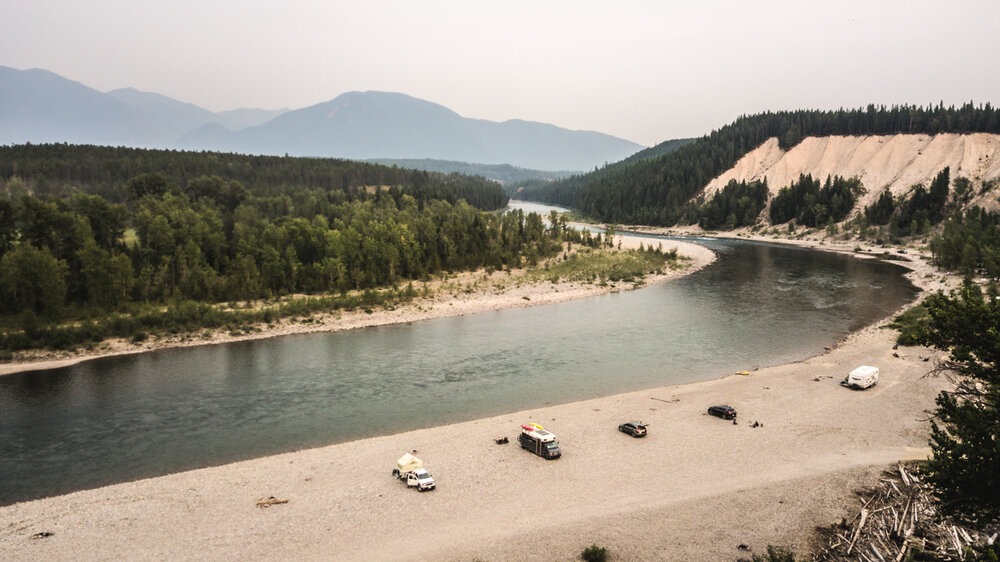
Rock beach driving…easy peezy!
Medium-Duty Vehicles are Surprisingly Capable
An aspect of Skoolie ownership that we did not expect is that Skoolies, especially short Skoolies, are surprisingly capable off-road. No, we are not seeking out off-road opportunities to test the flex of our suspension or drive through four-foot deep mud holes, but to get to more remote campsites we have endured some off-camber and sketchy situations.
Smaller busses and ambulances are built on similar chassis to full-size trucks. So, in general, there shouldn’t be much difference between taking a Chevy 3500 truck and the Okienomad’s Skoolie down a Forest Service road. The motor in our bus is shared with the military HMMWV and a lot of farm trucks and Suburbans of the past 25 years. So, it is no surprise that when geared right, busses and ambulances like ours will climb up and over mild obstacles once the Forest Service road turns rough. Like anything, 4×4 conversions and off-road-oriented suspension can be outfitted to nearly any vehicle — for a price. We prefer our two-wheel drive with full-size truck ground clearance and good tires to explore beaches, two-track, and tons of pavement in between.
Obviously ex-military vehicles like LMTV’s are extremely capable out of the box and present the opposite challenge, making them more pleasant to drive on the pavement. The addition of “highway gears” and creature comforts like air-ride seats will wake up a military vehicle into a more comfortable over-the-road adventure rig.
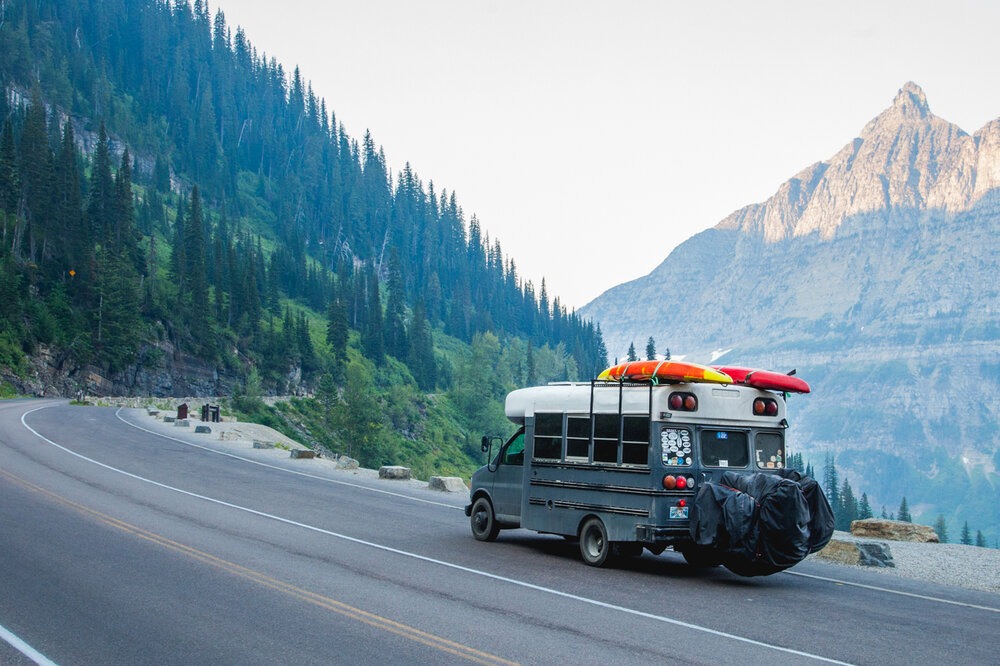
Going to the Sun Road-Slowly
Skoolies are Slow
As mentioned in Part 1 of this article, one of our favorite and least favorite parts of Skoolie overland travel is that Skoolies are slow. How slow you ask? We got passed by a full-size pickup hauling a trailer that had to have been 12,000 pounds or more like we were standing still. I couldn’t even recognize the make of the truck it was moving so fast, or err, we were moving so slowly. The relatively slow speed of heavier overland rigs up mountain passes, around sharp turns, and over washboard roads makes them the perfect overlanding vehicles, you simply see more than if you were flying by at 75 miles per hour in a new sprinter van.
Another benefit of traveling slowly is the reduced wear and tear on vital suspension and steering components. By taking it slow, you minimize the chance of a catastrophic mechanical in the bush and spend more time traveling and less time on your back in the garage.
If we had a choice, we would travel slowly. But since our rigs are slow, we don’t have a choice … so we travel slowly.
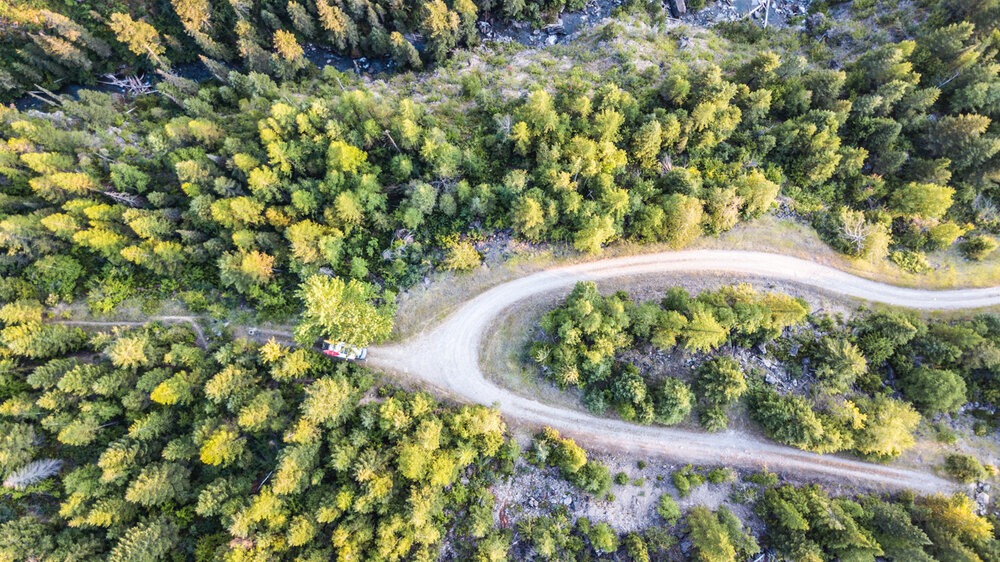
Reduce, Reuse, Recycle
One of my favorite aspects of bus travel is that our bus is able to continue to be in use and not end up in a landfill or junkyard to rot away. Keep in mind that traveling a ton of miles in a less-than-efficient vehicle through beautiful forests and deserts is not exactly healthy for the environment. However, keeping a big hunk of metal out of a scrap yard and in use is a win for the environment when you consider the alternative of buying a newer RV or full-size truck camper. We have recycled our bus from its previous life of shuttling kids to a new life of seeing beautiful things every day.
Additionally, we have found that we consume much less water, fossil fuels, and supplies when we live in a vehicle than we would in a standard house. Our onboard water storage is only about 40 gallons, but that can last the two of us five to seven days off-grid. The average American uses an estimated 88 gallons of water each day. Consider that we use propane for cooking and diesel for heating through extremely efficient appliances and all of our electricity is solar powered, we are consuming much less as nomads than we would be if we still lived in suburbia.
Once we are done with our travels in the bus we will likely park the bus somewhere nice and quiet and use it as a cabin in the woods or a suite for the visiting in-laws or parents. We will only need to add a composting toilet or outhouse and a small shower area to make the Skoolie 100% livable off-grid, reducing the need to use a ton of new material to build a new house someday.

Used Service Vehicles are Often Cheap
Last in our list of reasons why a retired service vehicle makes a great overlanding vehicle is that lightly used service vehicles are usually cheap. School districts, churches, military and EMS, and metropolitan transit companies are constantly shuttling out (pun intended) gently used, fleet-maintained vehicles for rock-bottom prices. Most of these vehicles have been maintained since day one by competent mechanics and are usually on the auction block with fewer than 200,000 miles on them. This is a considerably small sum in regards to the life of a well-maintained diesel engine. This is not to say that all builds on these platforms are affordable for everyone. If you have the skills, tools, and time, though, one can assemble a capable vehicle for much cheaper than an off-the-shelf offering.
Our bus came to us with 107,000 miles on it and other than some neglected maintenance issues by the second owner of the bus, we have had 40,000 plus trouble-free miles out of it. We have approximately $10,000 invested in our vehicle including maintenance and tires and have a hard time justifying other adventure rigs when our little bus ticks so many boxes.
Resources like govplanet.com, publicsurplus.com, and individual state, county, and city auctions are great places to find used vans, buses, ambulances, and military vehicles. The typical sale ads on Facebook and Craigslist are also good places to shop and potentially find a vehicle that fits your needs.
Not only are these vehicles cheap to buy, they are cheap to build. You don’t need to have an Insta-famous porcelain tub or a teak-wood deck on the roof of your bus. You can build a vehicle that is built simply, slap on a little paint and you are good to hit the road. Our bus was built with materials that are cheap and available at any hardware store with tools that most people already own.
If you haven’t noticed, I am a fan of repurposing vehicles to fit the ever-changing needs of the modern traveler and within certain conditions. I believe that a retired vehicle makes one of the best overland vehicles that money can buy. My wife Rachael and I have enjoyed our two years of full-time travel in our school bus and are even working on converting a full-size Skoolie to take on more adventures around the continent.
If you enjoyed these articles, check back for more blog posts about the outlandish overlanding rigs, unconventional trips and destinations, and unique gear that isn’t always in the limelight.